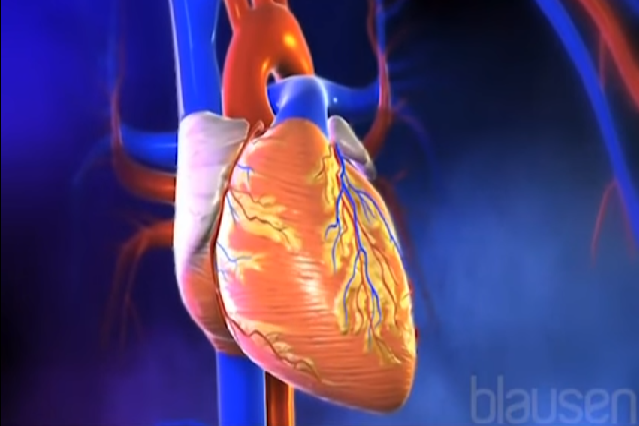The heart is the primary organ of the cardiovascular system. It is a beating muscle that continually pumps blood to the rest of the body. The coronary arteries supply the heart itself with the necessary oxygen and nutrients it needs to function effectively. Red blood cells, white blood cells and other substances flow freely to the heart and other parts of the body.
In a healthy person, the walls of the arteries are smooth and uniform in thickness. Over time, however, a high level of circulating cholesterol can cause fatty deposits, called plaque, to accumulate. As plaque is deposited, it can harden and cause the arteries to become narrow and less flexible, a condition called atherosclerosis. If atherosclerosis develops in the coronary arteries, the condition is called coronary arteries disease, or CAD.
If blood flow is severely interrupted, a myocardial infarction can occur. A myocardial infarction or MI is another term for heart attack. If blockage of the coronary artery exceeds 90 percent, the risk is increased for experiencing a heart attack. The risk is almost certain when plaque completely blocks the coronary artery.
Another way CAD can increase the risk for MI is by the development of a blood clot. Oftentimes a crack can develop at the site of plaque buildup. When this happens, blood can coagulate, or clump together at the site of the crack; or a blood clot, called a thrombus, can grow inside until it completely blocks the blood flow.
The extent of damage sustained by the heart during MI depends on the severity and location of the blockage, and the speed at which medical treatment is received. Fortunately, there are many ways to prevent atherosclerosis and to lower the risk for developing a heart attack.


